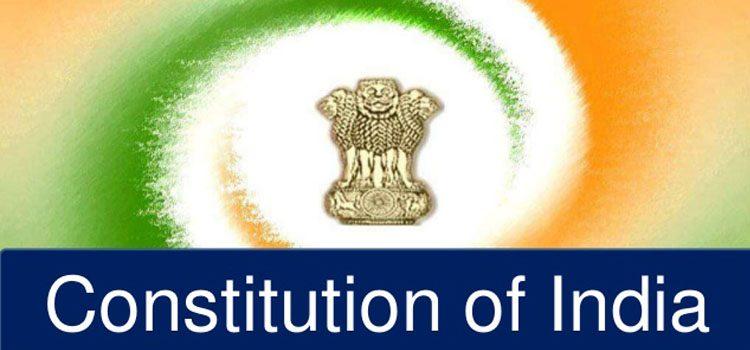Contents
“The price of freedom is eternal vigilance” – Thomas Jefferson
Evolution
- Montesquieu’s “Spirit of the Laws” is the predecessor to all contemporary comparative legal Scholarship
- Before adopting the U.S. Constitution, John Adams & James Madison surveyed the constitutions of different nations
- In the same way, different countries analysed various constitutions and adopted the provisions which were suitable to their territory. Eg., Irish Constitution mentions Directive Principles of state policy, Argentine Constitution – the reflection on U.S. Constitution
- The study of comparative law includes the study of the constitutions of totalitarian governments
Constitutional Structures
An overview of the parliamentary system and emergency conditions in the different constitutions suggest the following differences:
- Parliamentary – Federal/Presidential/Semi-Presidential/Purely parliamentary
- Condition for Emergencies –Natural disasters, terrorist threats, sustained or sporadic domestic disorder, economic distress etc.,
- U.S. Constitution refers only to ‘rebellion or invasion’
- French Constitution ‘serious and immediate threat’
- Indian Constitution ‘armed rebellion or external aggression’
- Political Systems – Dictatorship/Democracy/Republic/Anarchy
Indian Constitution Vs Unwritten Constitutions:
Unwritten Constitutions: e.g., Britain, New Zealand, Saudi Arabia, Israel, Canada, etc
British Constitution:
Product of history and the result of evolution- There is a difference between theory and practice
- Flexible and unitary constitution
- Parliamentary government and
two-party system - Rule of law and civil liberties applicable
| Indian | British |
|---|---|
| Written | Unwritten |
| Quasi Federal | Union Constitution |
| Power is divided between the centre and state | Power is the with the centre |
| No monarchy/Republic | Has King/Queen |
Indian Constitution Vs Written Constitution
American Constitution:
- Works on Checks and balances concept
- Presidential type of government
- Rigid Constitution
- Federal System
| Indian | American |
|---|---|
| Not a result of agreement between states | Result of an agreement between states |
| Single Citizenship | Dual citizenship |
| Representatives are sent to the parliament depending on the population of the state | Each state sends equal number of representatives to the senate |
| No principle of equality between the states | Principle of equality between the states |
| The states are not sovereign | Union and each Unit is sovereign in its sphere |
| No state can separate from Indian territory | The state can separate from the federation |
| The only centre has residuary powers | States have residuary powers |
| Supreme Court has appellate jurisdiction | No appellate jurisdiction for the Supreme Court |
| No referendum is necessary for amending the Constitution | For amendment of Constitution, a referendum is necessary |
Indian Constitution Vs Dynamic Constitution
Switzerland:
- A comparatively longer document
- Spirit of Republicanism
- Federalism
- James Bryce “Among modern democracies, which are true democracies, Switzerland has the highest claim to
be studied ” - Dynamic Constitution (protection of individual, welfare state)
| Indian | Switzerland |
| Executive vested in the President | Executive vested in the Federal Council |
| President elected by an electoral college | Federal Council Elected by Federal Assembly |
| Party Government | Absent |
| States cannot conclude treaties | Cantons can conclude treaties |
| Supremacy of Judiciary | Judiciary cannot rule invalid a federal law |
| No referendum | Referendum possible |
Comparative Constitutional law and national identity:
The Constitution incorporates a national identity which is evident from the statements in some of the constitutions below:
- The preamble to Irish Constitution – ‘The Most Holy Trinity’
- The preamble to South African Constitution – ‘recognise the injustices of our past’
- Art 9 of the Japanese Constitution – “The Japanese people forever renounce war as a sovereign right of the nation and purports to ban the maintenance of land, sea, airforces”
- The preamble to Indian Constitution – ‘We, the people of India having solemnly resolved to constitute India into a sovereign, socialist, secular, democratic, republic….”
General Comparison with other countries
| India | Russia | Japan | France | Germany |
|---|---|---|---|---|
| Written | Written | Written | Written | |
| Flexible/Rigid | Rigid | Rigid | Rigid | Rigid |
| Federal with Unitary Bias | Federal | Unitary | Unitary | Federal |
| Parlimentary Democracy | Semi Presidential | Parlimentary Democracy | Quasi Presidential/Quasi Prime ministerial | Parlimentary Republic |
| Supremacy of Constitution | Supremacy of Constitution | Parliament with limited powers | ||
| Republic | Republic | Constitutional Monarchy | Republic | Republic |
| President -Indirect election | Direct Election | Direct election | Indirect Election | |
| Single Citizenship | Dual Citizenship | Single Citizenship | Dual Citizenship | In principle |
| Procedure established by law | The procedure established by law |

